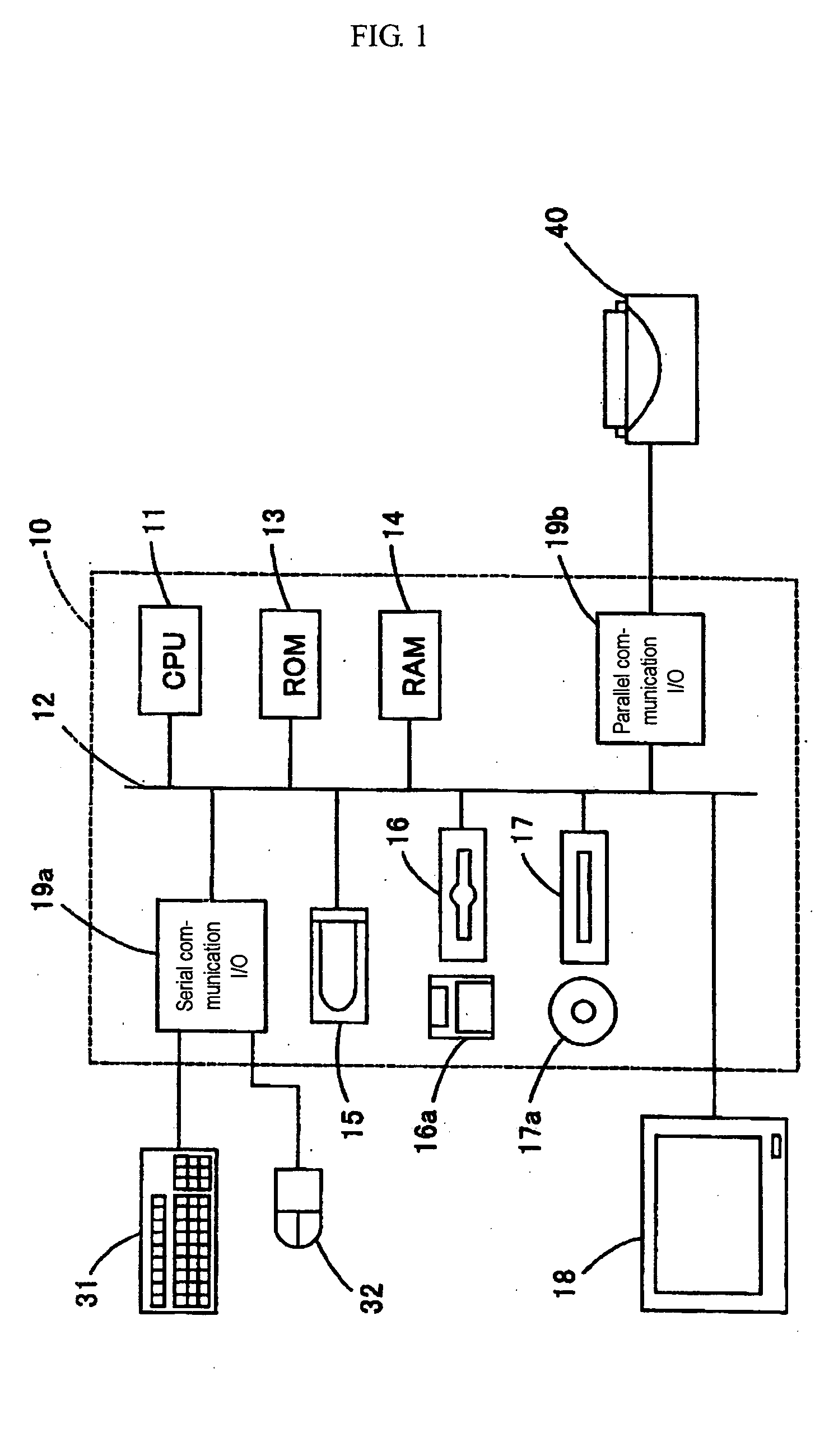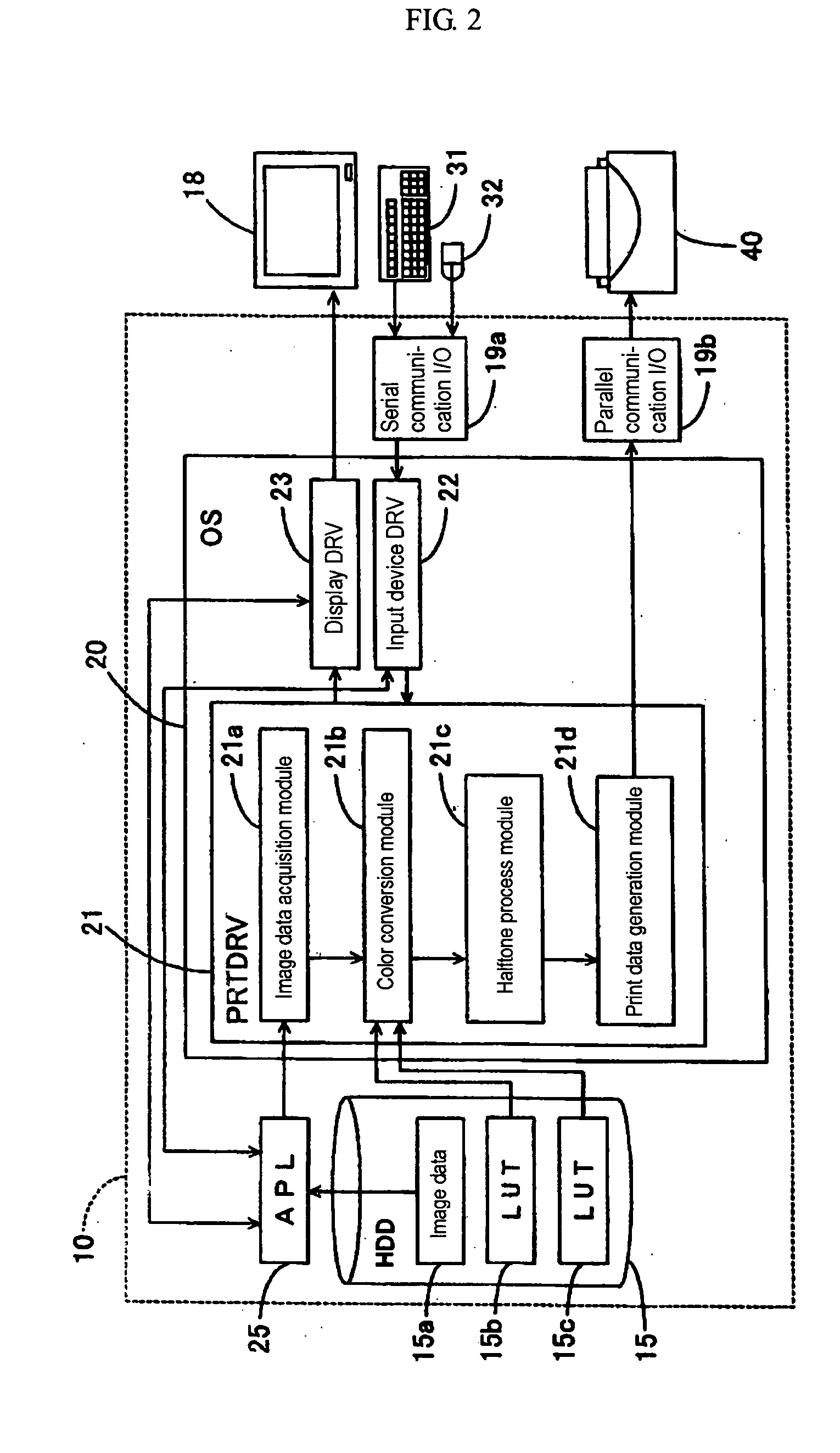Color coversion apparatus color conversion method color change program and recording medium
- Summary
- Abstract
- Description
- Claims
- Application Information
AI Technical Summary
Benefits of technology
Problems solved by technology
Method used
Image
Examples
second embodiment
(6) Second Embodiment
[0186] As mentioned above, the present invention just needs to define colors for reference points with more gradations by decreasing the number of reference points in the LUT. There are available various techniques for decreasing the number of reference points in the LUT in addition to the above-mentioned technique that extracts several to over ten reference points near the gray axis from the reference points in the LUT 15b by assuming the color solid in the sRGB space to be a cubic lattice. FIGS. 18 and 19 illustrate techniques of defining reference points in the LUT 15c independently of reference point positions in the LUT 15b and providing a smaller number of reference points than that of the LUT 15b.
[0187]FIGS. 18 and 19 are perspective views showing a color solid Cs in the sRGB space. The color solid Cs is cut on a plane crossing three points (RGB)=(0,0,255), (0,255,0), and (255,0,0), and is viewed from the origin 0 along the gray axis. FIG. 18 extracts 5-...
third embodiment
(7) Third embodiment
[0189] When the number of reference points in the LUT is decreased, the present invention enables to freely determine positions of the reference points. It is possible to further improve the color conversion accuracy in a monochrome area by appropriately changing positions of the reference points. FIG. 20 shows how to select reference points so as to improve the color conversion accuracy for the entire monochrome image by using more reference points in the highlighted portion and the shadow portion than in a medium-brightness area. FIG. 20 is a perspective diagram showing a color solid in the sRGB space having a gray axis comprising a line connecting a black point K (origin 0) and a white point W.
[0190] Points P3 on the gray axis in FIG. 20 belong to a plurality of coordinate points extracted as reference points in the LUT 15c on the gray axis. An interval between the points P3 is configured to narrow as the points approach both ends of the gray axis. The refere...
fifth embodiments
(8) Fourth and Fifth Embodiments
[0194] The present invention just needs to define colors for reference points with more gradations by decreasing the number of reference points in the LUT. A prescribed area to which the reference points having many gradations is not limited to the above-mentioned monochrome area. For example, such prescribed area can be an area that contains a flesh color requiring highly accurate color conversion so as to obtain excellent image quality or an area that contains a blue color capable of brilliant coloring by more efficiently using a color gamut of a printing apparatus. FIGS. 22 and 23 each show a color solid in the sRGB space formed in an orthogonal space whose axis represents each of RGB colors. FIG. 22 ensures a prescribed area that contains the flesh color. FIG. 23 ensures a prescribed area that contains the blue color.
[0195] A prescribed area Ar in FIG. 22 contains the flesh color (R=255, G=204, B=153), not only the flesh color itself, but also ne...
PUM
 Login to View More
Login to View More Abstract
Description
Claims
Application Information
 Login to View More
Login to View More - R&D
- Intellectual Property
- Life Sciences
- Materials
- Tech Scout
- Unparalleled Data Quality
- Higher Quality Content
- 60% Fewer Hallucinations
Browse by: Latest US Patents, China's latest patents, Technical Efficacy Thesaurus, Application Domain, Technology Topic, Popular Technical Reports.
© 2025 PatSnap. All rights reserved.Legal|Privacy policy|Modern Slavery Act Transparency Statement|Sitemap|About US| Contact US: help@patsnap.com



